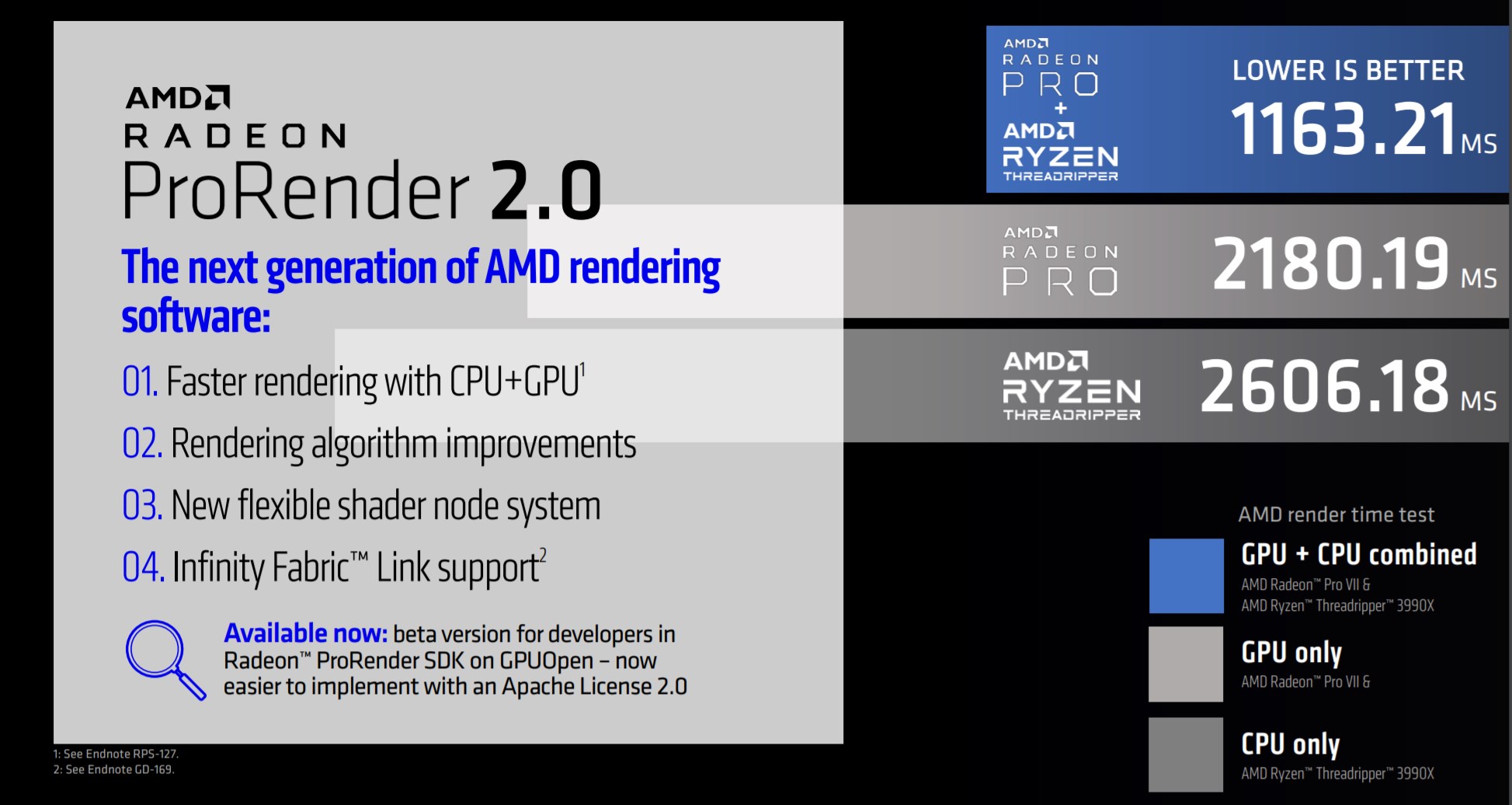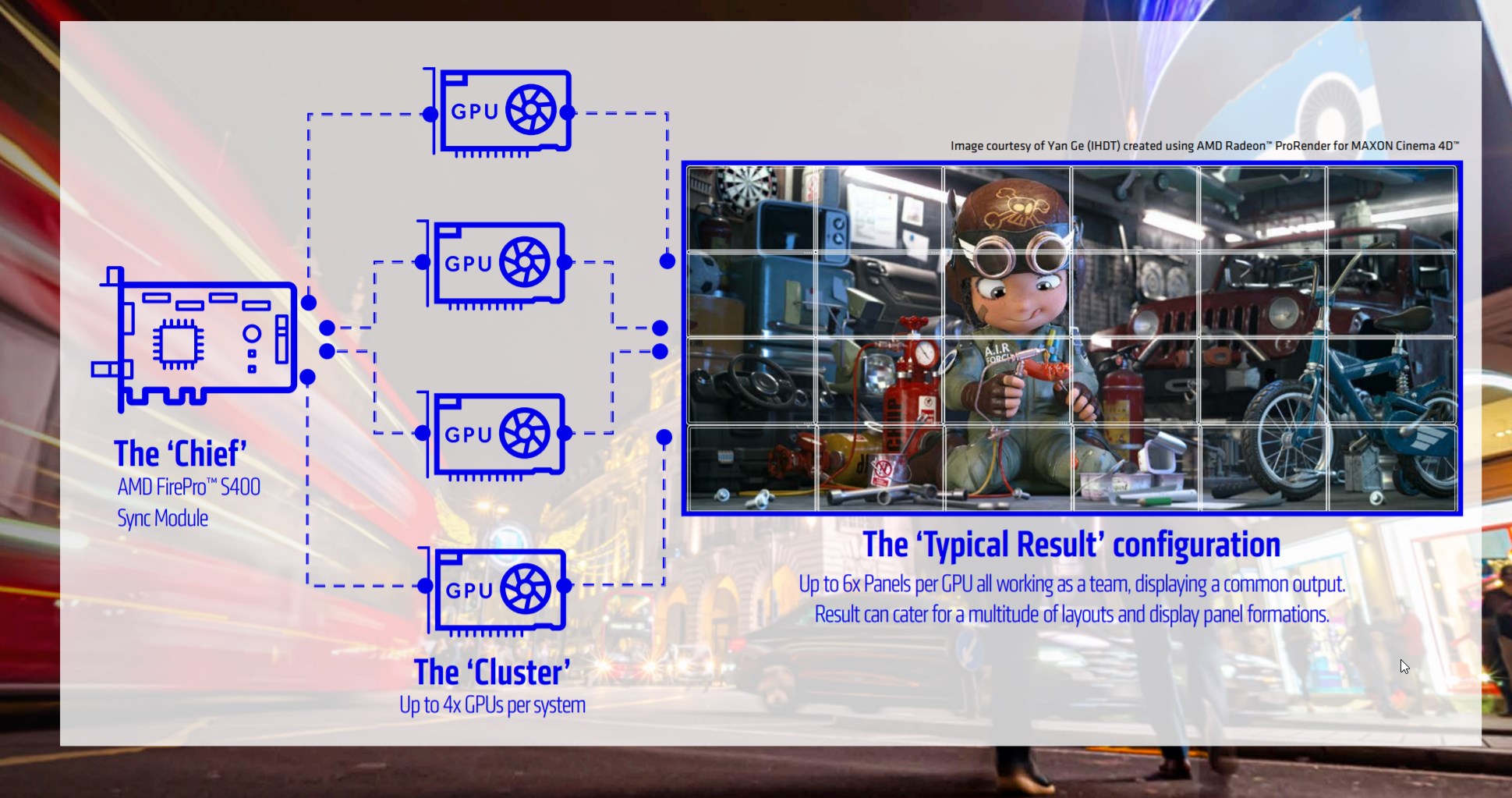AMD is targeting the pros with the announcement of its Radeon Pro VII workstation graphics card on May 13.
Based on the Vega 20 GPU, the Radeon Pro VII graphics card features 60 compute units (CUs), four fewer than the full Vega 20 GPU on the consumer Radeon VII graphics card. It comes with 16GB of ECC high-bandwidth memory (HBM) capable of reaching 1TB/s bandwidth. The card also communicates over the PCIe 4.0 bus, which has double the throughput as PCIe 3.0.
The AMD Radeon Pro VII excels at double-precision floating-point number crunching, offering 6.5 tera floating-point operations per second (TFLOPS) in FP64. With the Radeon Pro VII, AMD aims to offer an affordable option for design and simulation professionals working with high-precision workloads. Simultaneously, it hopes to capture the attention of VFX and media production teams with its 16GB memory buffer useful for holding high-res media assets.
One neat AMD’s exclusive feature is ProRender 2.0. Typically, the rendering process is done either through GPU or the CPU. ProRender 2.0 renders the CPU and GPU simultaneously to cut down on render time. It’s compatible with AMD Threadripper processors, as well as its consumer-oriented Ryzen 9 and 7 platforms. Applications with ProRender plug-in support include Unreal Engine, Autodesk Maya, SideFX Houdini, Blender among others. AMD made ProRender SDKs available under Apache Licence 2.0 to shaving off some back-and-forth legal headaches for developers looking to implement them into their software.
Radeon Pro VII comes with six DP1.4 ports for multi-panel synchronized high-resolution output. A typical use case would be a large scale, multi-panel digital signage, or filming using synchronized LED backdrops. By attaching up to four Radeon Pro VII to an AMD FirePro S400 sync module, up to 24 displays can work in sync as a common output.
The AMD Radeon Pro VII is available in June for US$1,900 (around CA$2,660) through Memory Express and Newegg Canada.




